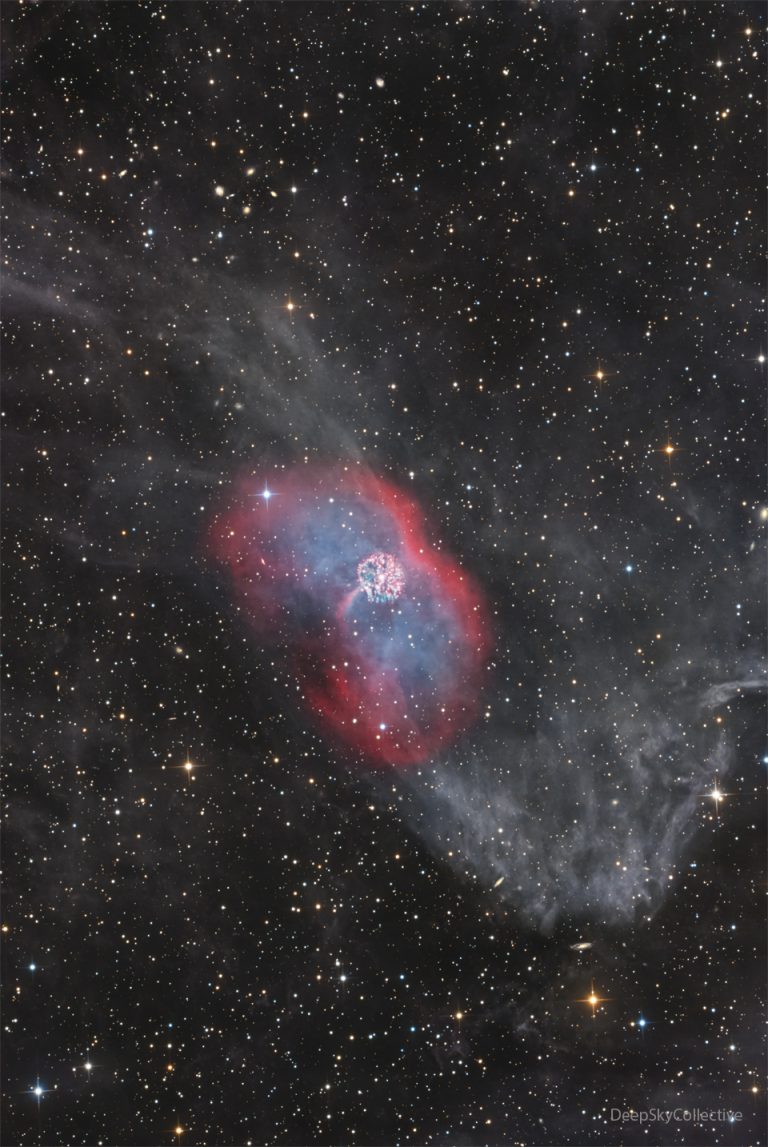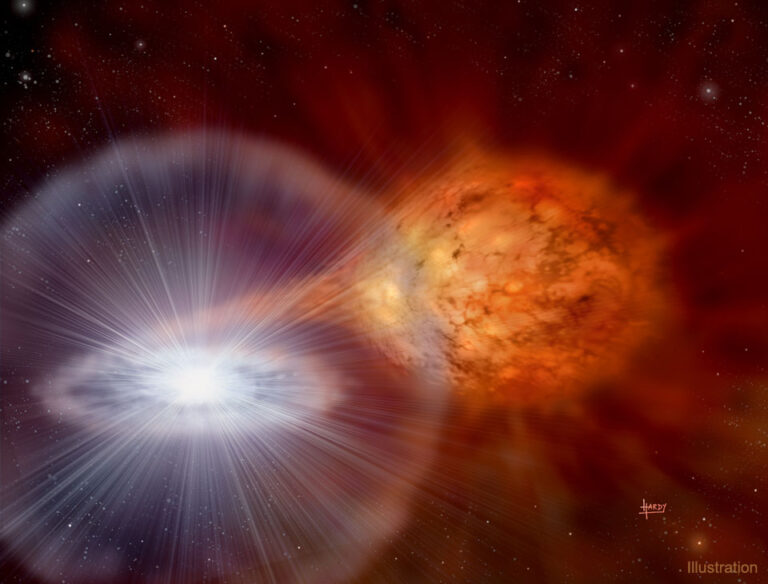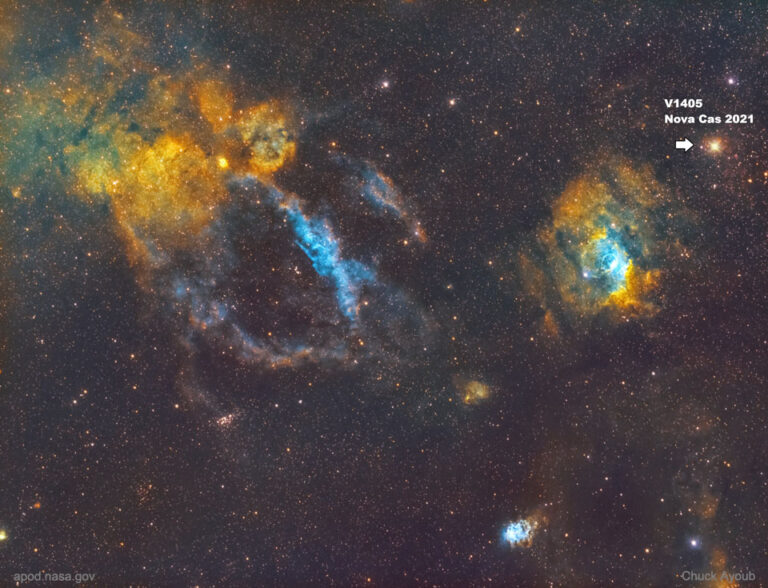英仙GK: 新星与行星状星云
图像中有一个暗淡的星云垂直延伸。中心是一个红色包层,周围环绕着漫射蓝色辐射。中心是一个明亮的、接近圆形的色彩斑斓的星云。有关更多详细信息,请参阅说明。

图像中有一个暗淡的星云垂直延伸。中心是一个红色包层,周围环绕着漫射蓝色辐射。中心是一个明亮的、接近圆形的色彩斑斓的星云。有关更多详细信息,请参阅说明。

2021年8月22日 Explosions from White Dwarf Star RS Oph Illustration Credit & Copyright: David A. Hardy & PPARC Explanation: Spectacular explosions keep occurring in the binary star system named RS Ophiuchi. Every 20 years or so, the red giant star dumps enough hydrogen gas onto its companion white dwarf star to set off a brilliant thermonuclear explosion on the white dwarf’s surface. At about 5,000 light years distant, the resulting nova explosions cause the RS Oph system to brighten up by a huge factor and become visible to the unaided eye. The red giant star is depicted on the right of the above drawing, while the white dwarf is at the center of the bright accretion disk on the left. As the stars orbit each other,…
2021年8月16日 Perseid Meteor, Red Sprites, and Nova RS Ophiuchus Image Credit & Copyright: Daniel Korona Explanation: This was an unusual sky. It wasn’t unusual because of the central band the Milky Way Galaxy, visible along the image left. Most dark skies show part of the Milky Way. It wasn’t unusual because of the bright meteor visible on the upper right. Many images taken during last week’s Perseid Meteor Shower show meteors, although this Perseid was particularly bright. This sky wasn’t unusual because of the red sprites, visible on the lower right. Although this type of lightning has only been noted in the past few decades, images of sprites are becoming more common. This sky wasn’t unusual because of the nova, visible just above the image…

2021年06月07日 A Bright Nova in Cassiopeia Image Credit & Copyright: Chuck Ayoub Explanation: What’s that new spot of light in Cassiopeia? A nova. Although novas occur frequently throughout the universe, this nova, known as Nova Cas 2021 or V1405 Cas, became so unusually bright in the skies of Earth last month that it was visible to the unaided eye. Nova Cas 2021 first brightened in mid-March but then, unexpectedly, became even brighter in mid-May and remained quite bright for about a week. The nova then faded back to early-May levels, but now is slightly brightening again and remains visible through binoculars. Identified by the arrow, the nova occurred toward the constellation of Cassiopeia, not far from the Bubble Nebula. A nova is typically caused by…